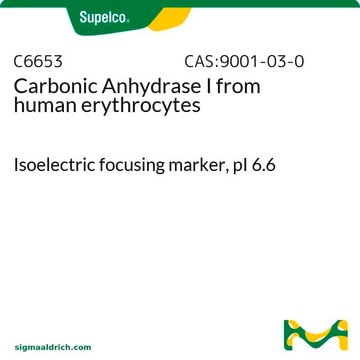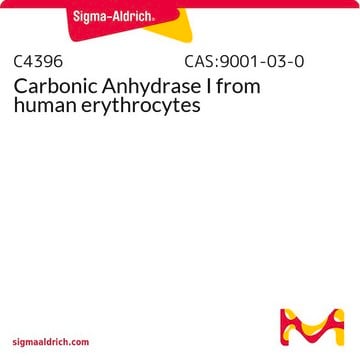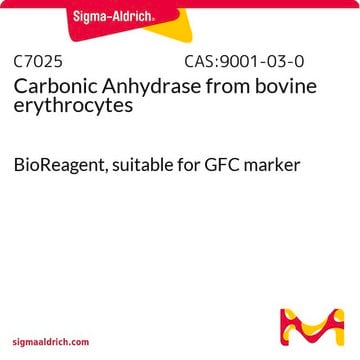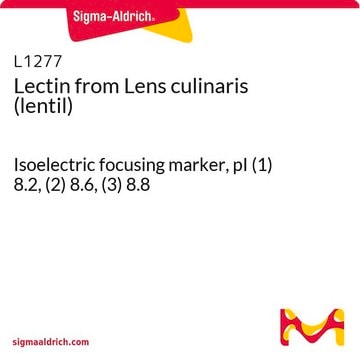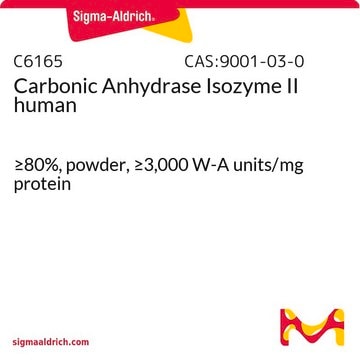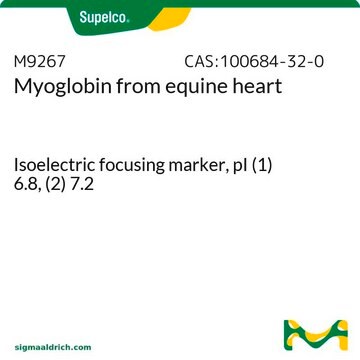C3666
Carbonic Anhydrase Isozyme II from bovine erythrocytes
Isoelectric focusing marker, pI 5.4
Synonym(s):
Carbonate Dehydratase, Carbonate Hydrolyase, Carbonic Anhydrase II
About This Item
Recommended Products
Quality Level
form
powder
packaging
vial of ~1 mg protein
pI
5.4
solubility
deionized water: soluble, clear to slightly hazy, colorless (Dissolve vial contents in 0.25mL of deionised water.)
storage temp.
−20°C
Looking for similar products? Visit Product Comparison Guide
Preparation Note
Signal Word
Danger
Hazard Statements
Precautionary Statements
Hazard Classifications
Resp. Sens. 1
Storage Class Code
11 - Combustible Solids
WGK
WGK 3
Flash Point(F)
Not applicable
Flash Point(C)
Not applicable
Personal Protective Equipment
Certificates of Analysis (COA)
Search for Certificates of Analysis (COA) by entering the products Lot/Batch Number. Lot and Batch Numbers can be found on a product’s label following the words ‘Lot’ or ‘Batch’.
Already Own This Product?
Find documentation for the products that you have recently purchased in the Document Library.
Customers Also Viewed
Our team of scientists has experience in all areas of research including Life Science, Material Science, Chemical Synthesis, Chromatography, Analytical and many others.
Contact Technical Service